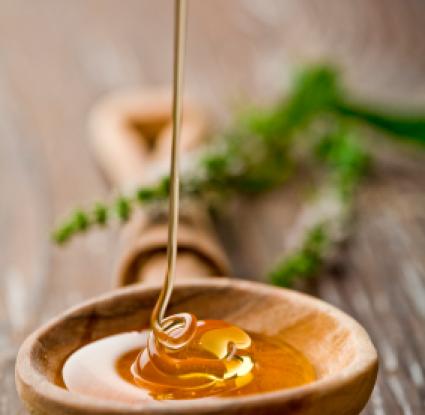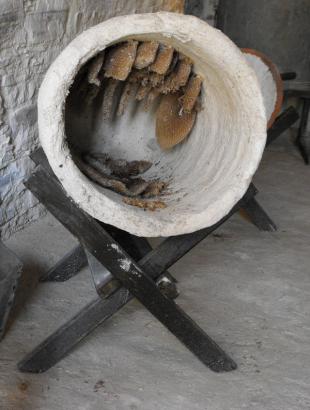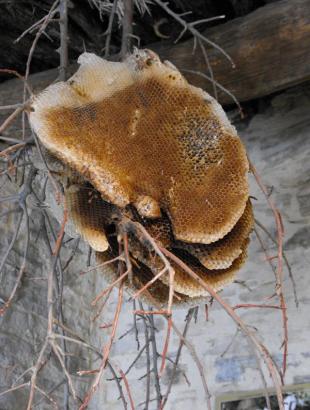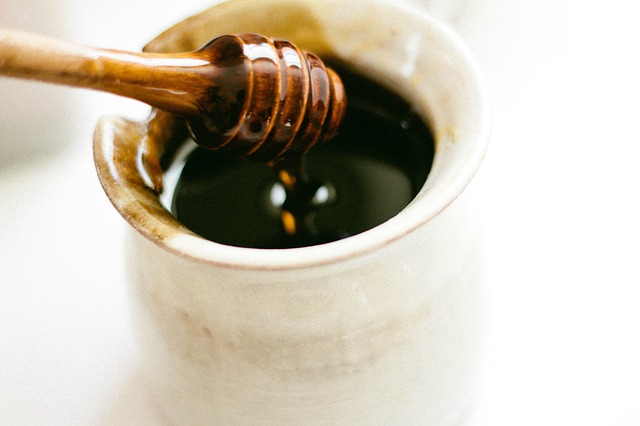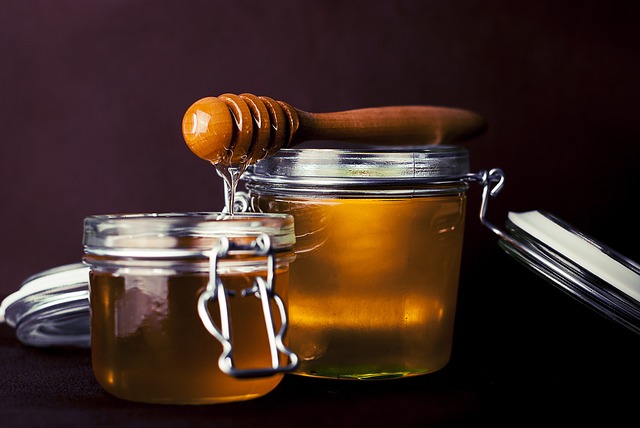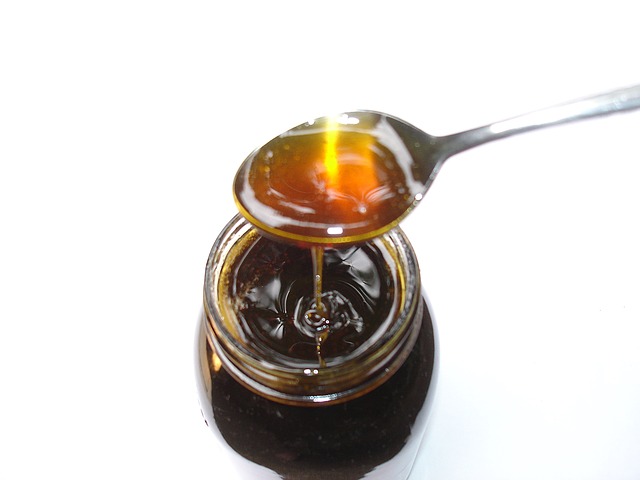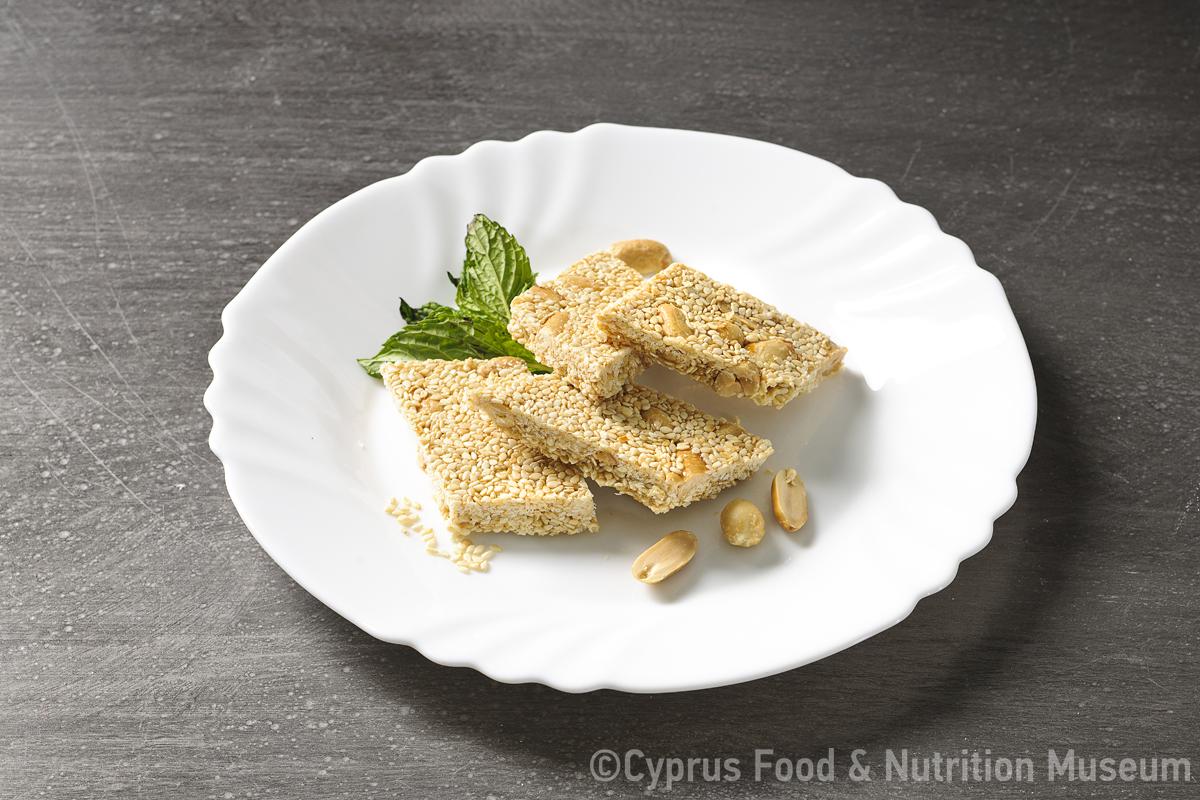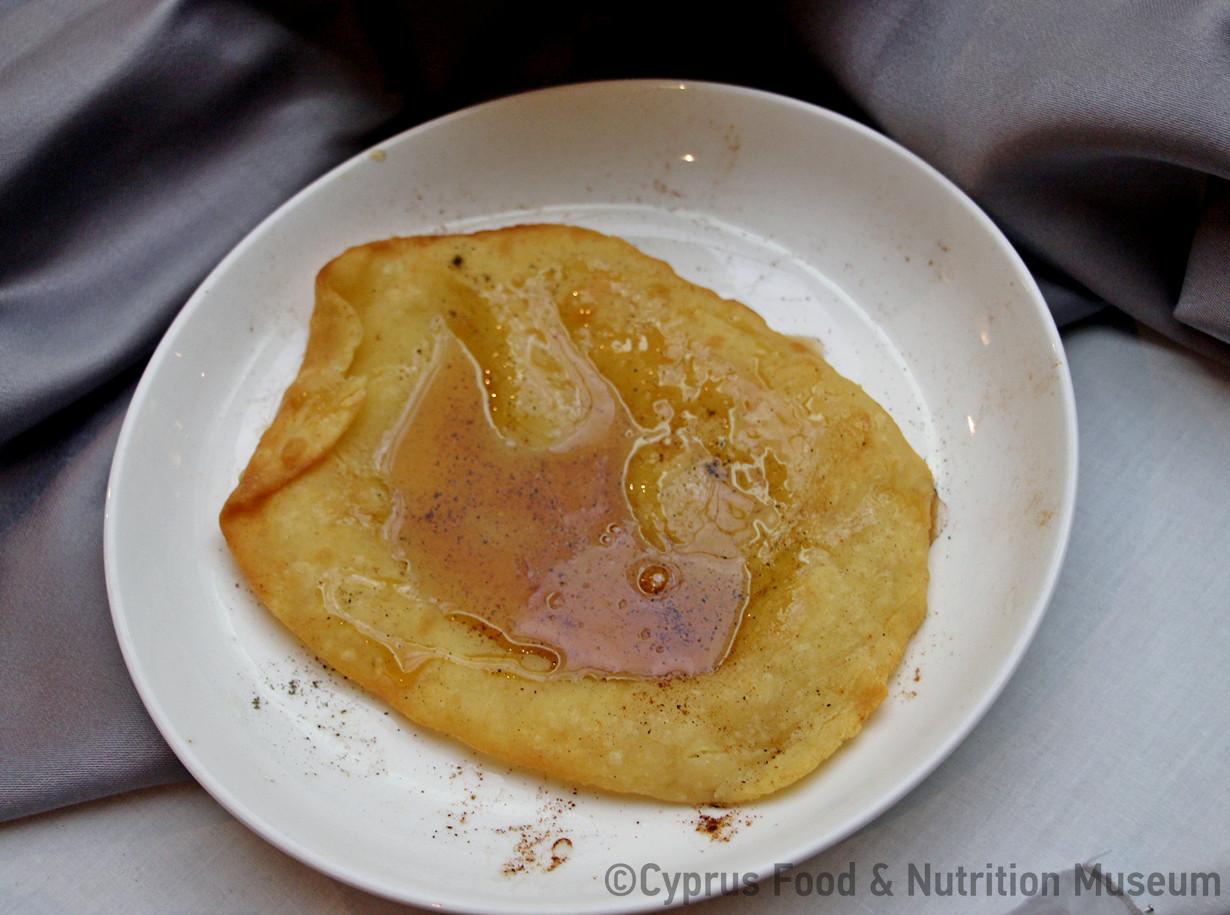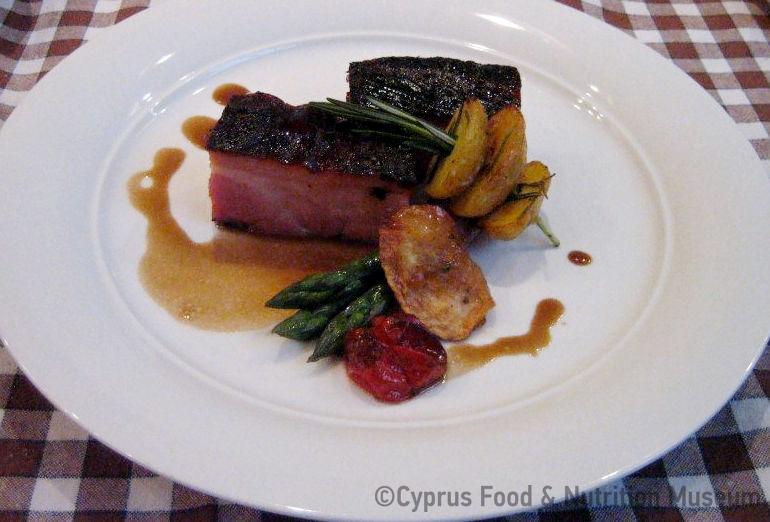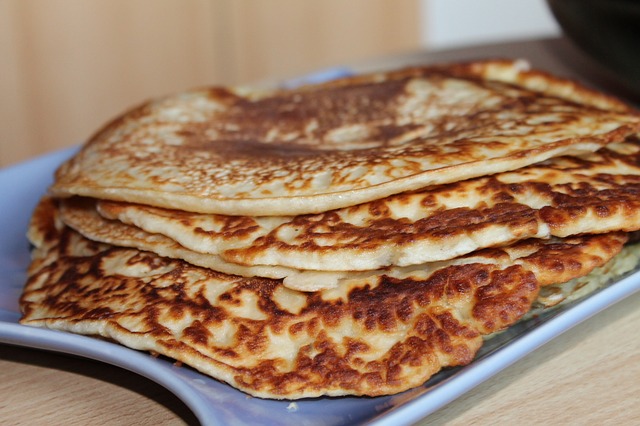Honey was used as a sweetener in areas where the availability of haroupomelo (carob syrup) and espima (grape syrup) was limited.
Name - Origin
Honey is the viscous substance produced by bees and has a sweet taste and many nutrients (Babiniotis 2005, entry μέλι,το, 1069).
Honey collection would usually take place at the end of September. The beekeeper would remove one side of tziverka from the beehives and boil them in a hartzin (caulrdon). The beekeeper would pour a glass of water into the hartzin to create steam which would cause the honey to melt more easily. Honey would drip in the hartzin while potz̆erka (the remains) would be placed in hot water (Philotheou 1980, 81).
Functional and symbolic role
Honey was used as a sweetener in areas where the availability of haroupomelo (carob syrup) and espima (grape syrup) was limited. Honey was used to serve desserts such as xerotiana, daktyla and pis̆ies (Kypri - Protopapa 2003, 255, 258). It was also used in kaikanan (Philotheou 1980,83).
Honey for the Cypriots of the Ottoman and modern period was considered an ingredient of sweets.
As honey was a a symbol of purity, love and hard work, it was offered (together with with walnuts or almonds) at the dinner table that followed the first meeting of the young people who were going to get married and their families, Pigeons were also offered at the same table (Christodoulides 1994, 115; Mavrokordatos 2003, 329).
Additional information and bibliography
There are two written sources in which honey is mentioned and they date at least five centuries apart: Pliny (1st century AD) mentions Cyprus in connection with the abundance of honey in the area (Pliny 1983, 11.33, vol. 3, 452). Kassianos Vassos (6th-7th century AD) in his work, Περί γεωργίας εκλογαί, mentions that the best honey in Cyprus was made in Chytrous (Kythrea region).
The beekeeper used to produce pomelitis, which was a sweet broth, from potz̆erka (the remains). Pomelitis was used in the preparation of sweetmeats but was an inferior product to honey. They used to make candles with what was left out of the potz̆erka (Philotheou 1980, 81).
Babiniotis G. (2005), Λεξικό της Νέας Ελληνικής Γλώσσας. Με σχόλια για τη σωστή χρήση των λέξεων. Ερμηνευτικό, Ορθογραφικό, Ετυμολογικό, Συνωνύμων-Αντιθέτων, Κυρίων Ονομάτων, Επιστημονικών Όρων, Ακρωνυμίων, Centre for Lexicology, Athens, Greece.
Philotheou G. (1980), «Μελισσοκομία», Λαογραφική Κύπρος 10,29, 81-83.
Christodoulides Chr. (1994), Πέλλα-Πάις, Limassol.
Mavrokordatos G. I. (2003), Δίκωμο: Το χθες και το σήμερα, Nicosia.
Natassa Charalambous, Demetra Dimitriou, Maria Tsangari, Demetra Zannetou, Stalo Lazarou, Savvas Polyviou, Argyro Xenophontos

